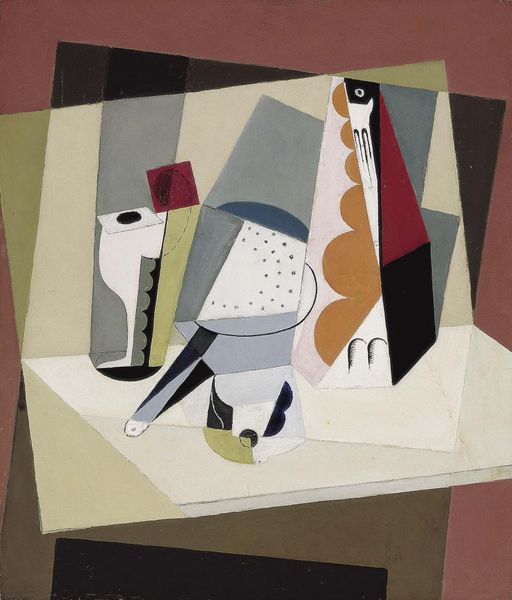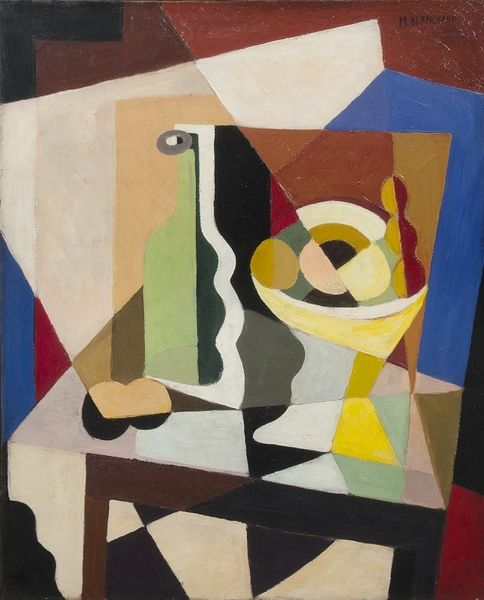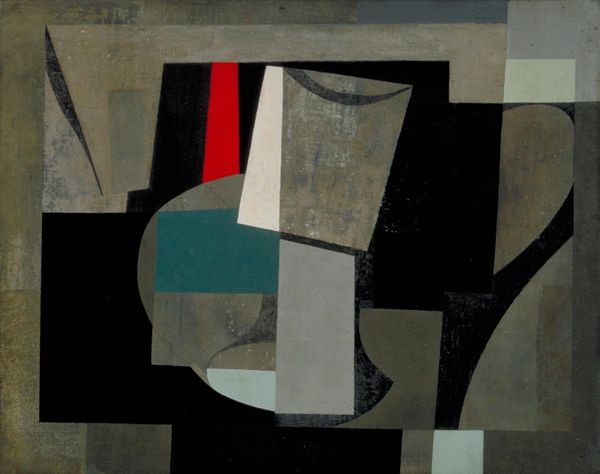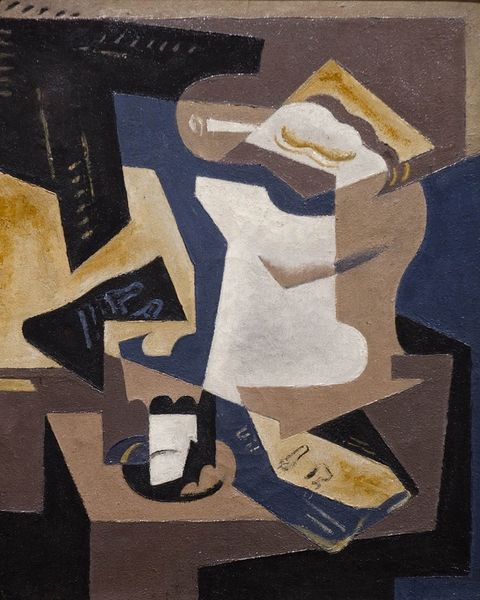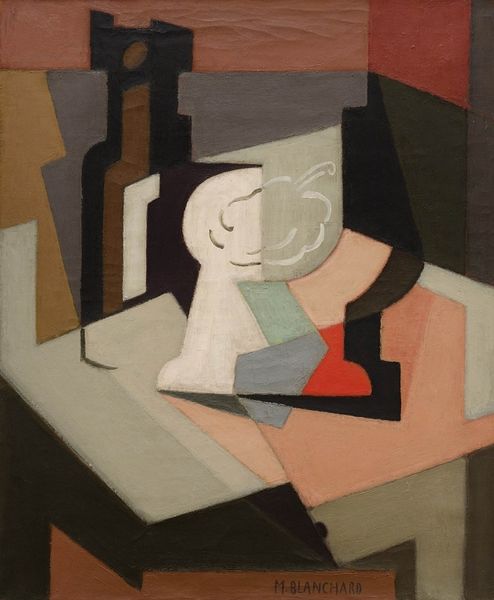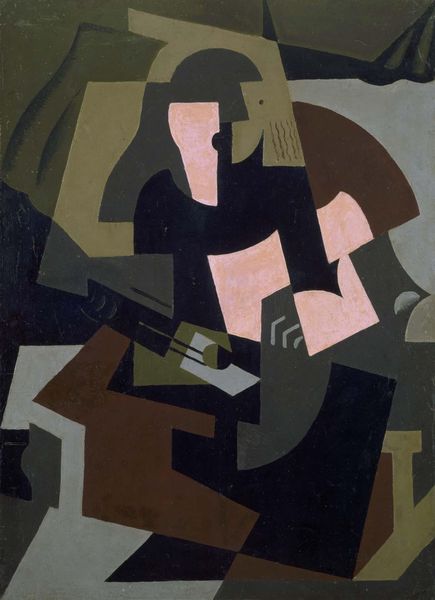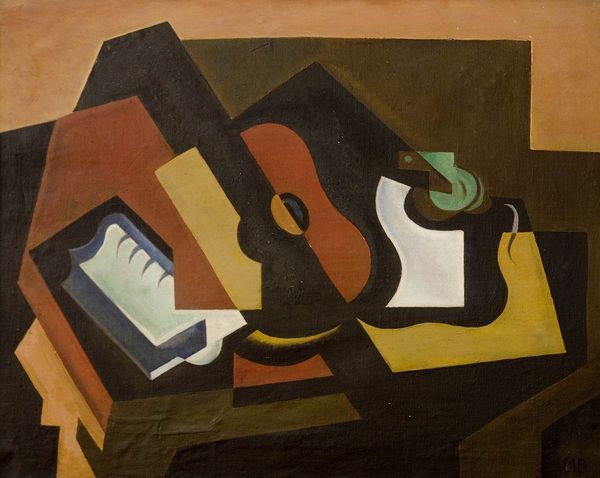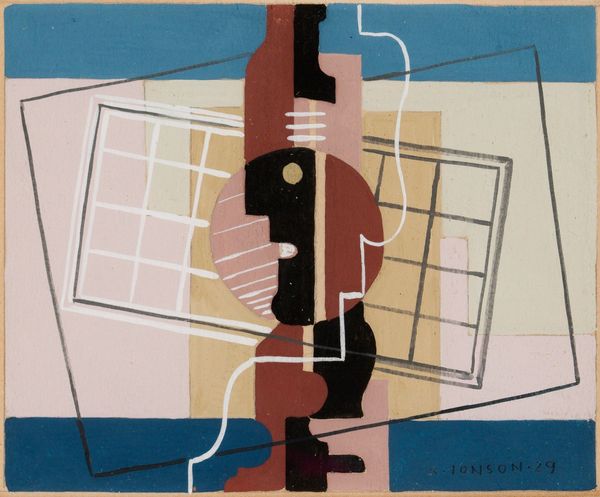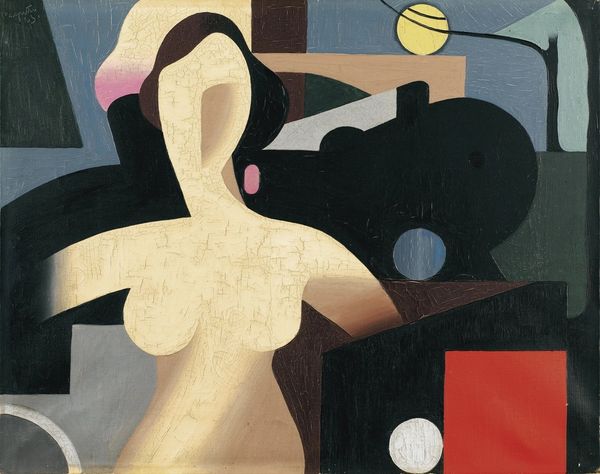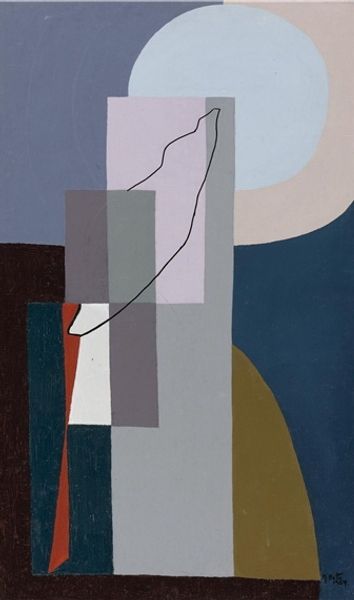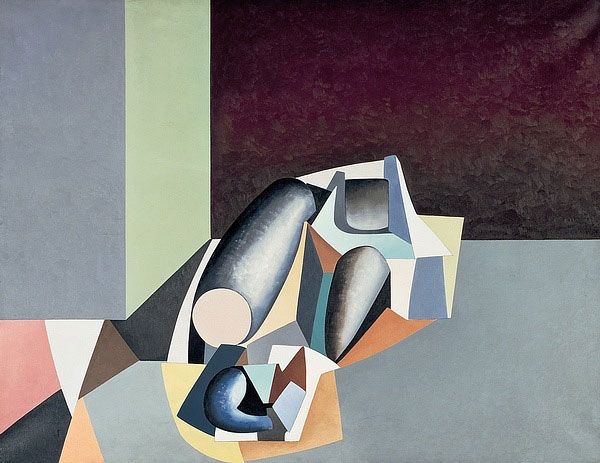
painting
#
cubism
#
painting
#
geometric
#
abstraction
#
modernism
Copyright: Public domain
Curator: Before us is María Blanchard’s "Cubist Composition," created in 1917. Its arrangement of geometric forms immediately catches the eye, doesn't it? Editor: It certainly does. My immediate impression is one of contained chaos—a very controlled disruption of form. The muted color palette adds a somber, almost melancholic mood. Curator: Absolutely. And understanding the social context—Europe during World War I—lends weight to that feeling. Blanchard, along with other Cubists, was responding to a world undergoing radical upheaval, mirrored in the fragmentation of their subject matter. Think about how materials were diverted to war, perhaps even influencing the choices made in this piece? Editor: That’s compelling. But setting that aside, what really strikes me is the intricate arrangement of shapes. How the artist orchestrates positive and negative space to create this dynamic tension. Curator: The interplay you see relies on more than shape. Consider the deliberate crafting. Oil paint, carefully layered, yet clearly delineated to establish the various planes. Editor: Yes, there's a definite push and pull between abstraction and representation. The objects, while deconstructed, hint at familiar forms, perhaps a bottle or a table setting, prompting our minds to fill in the gaps. Curator: And those hints link directly to Blanchard's intention: She took traditional domestic scenes, labor typically delegated to women, and blew apart those expectations by forcing viewers to confront traditional artistic structures and class. The production of those painted commodities serves as comment upon female subjugation in early 20th-century Europe. Editor: So true. Looking at the composition, the subtle shifts in color—the muted browns and grays—almost function like musical chords, creating a visual harmony within the fragmentation. It’s elegant, even as it is discordant. Curator: Indeed. Through material experimentation, she challenged both conventional artistic form and the social order in which those conventions thrived. Editor: It is incredible how the formal elements create a captivating visual experience. Curator: Indeed. The intersection of both visual and physical elements truly demonstrates her mastery and thought-provoking ideas of art creation.
Comments
No comments
Be the first to comment and join the conversation on the ultimate creative platform.
